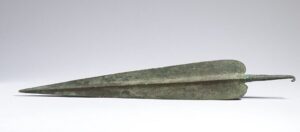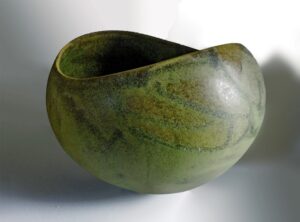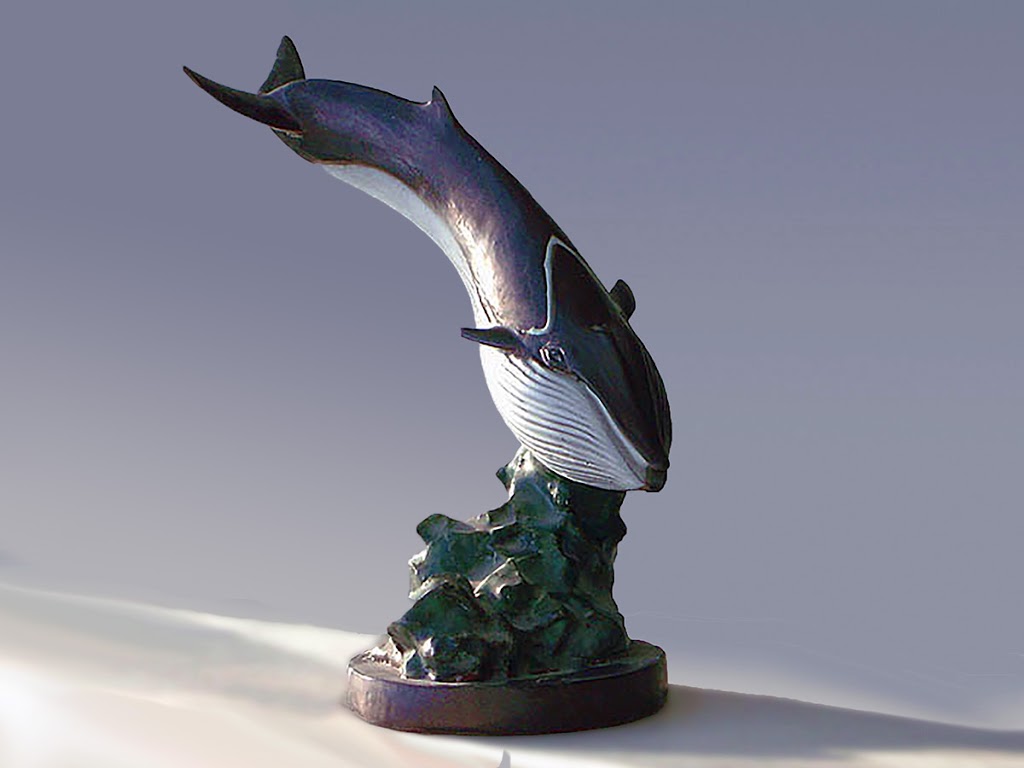 |
| The middle sector is the artist’s focal point in this sculpture from the Bronze Age, raised from below and burdened from above – Public Domain |
Prior to the 1930’s when Australian archaeologist, V Gordon Childe, presented his theory about the metal smiths of the Bronze Age and their concomitant relationship to the power elite, archaeologists considered craft making merely as a result of economics. Childe identified the powerful role that prestige goods played in the early development of craft specialization and connected the emergence of craft specialists with an itinerant metallurgist culture in prehistoric Europe. A debate emerged around the social and political role that specialized craft production played in structuring of prehistoric culture, not unlike the role that digital invention plays in reshaping the world today.
Rooted in Movement, Aspects of Mobility in Bronze Age Europe, a introduction published by the Jutland Archaeological Society, Constanze Rassmann quotes and contests Childe as he hypothesizes that the travelling metal smiths enjoyed a great deal of individual freedom:
“But if they were detribalized they were ipso facto liberated from the bonds of local customs and enjoyed freedom to travel and settle where they could find markets for their products and skill” (Childe 1940, 163).
 |
| An elegantly proportioned copper alloy spearhead cyprus Public Domain |
Archaeologists debate whether specialized Bronze Age craft making was a full time activity or whether it was done in conjunction with other activities. Based on the amount of time, the specialized knowledge, and the raw materials needed to support specialized craftsmen, archaeologists reason that full time metal workers could only have existed in a surplus economy where there is production beyond what is needed for sustenance. It is theorized that specialized craftsmen arose in tandem with a powerful elite class for whom the craftsmen produced their work as objects signifying the elite status of the wearer or owner. Crafts, identifiable as produced by a single craftsman or workshop, have been found in remote regions spurring speculation that the craftsmen themselves were “prestige goods” exchanged among palaces and whether the craftsmen themselves were members of an elite class, much like the celebrities of today (Rooted in Movement, Aspects of Mobility in Bronze Age Europe by Juteland Archaeological Society).
However, by momentarily turning this view of specialisation on its head, we can see how the development of expertise connected to the use and efflorescence of prestigious types of material culture may in fact have had a reciprocal or recursive relationship with the evolution of socially complex groups. Approaching Specialisation: Craft Production in Late Neolithic/Copper Age Iberia, by Jonathan T. Thomas
 |
|
Prestige Goods: Bronze Age Central Asian Beaker with Birds made out of Gold Alloy https://creativecommons.org/publicdomain/zero/1.0/
|
I submit that specialization devised at an individual level had to come first because the elite investor does not know how to invent or make things as is exemplified in contemporary time in the recent Elizabeth Holmes saga, wherein Holmes imagined highly marketable science fiction in the form of a blood test requiring only a pin prick of blood that would diagnose practically any ailment. Although Holmes attracted nine billion dollars in investment from the highest strata of the power elite, and maintained a highly staffed, state of the art laboratory, it was not enough to create the technology out of thin air. The seed of a viable technology has to exist first, after which a reciprocal and recursive relationship can promote further development.
In the twenty first century, that seed is classified as intellectual property.
The American Idea
The diversity in the faculties of men, from which the rights of property originate, is not less an insuperable obstacle to an uniformity of interests. The protection of these faculties is the first object of government. James Madison, Federalist Paper # 10
 |
| Utility Item, metal, Bronze Age Central Asia, Public Domain Image |
Other craftsmen whom archaeologists call “subsistence craftsmen” are thought to have made tools which were commonly used, and to work on demand on a seasonal basis or even develop products sold in a market, as independent entrepreneurs.
American archaeologists Edward Shortman and Patricia Urban speculate in Modeling the Roles of Craft Production in Ancient Political Economies, that some of the subsistence craftsmen class developed an income level beyond mere subsistence to occupy a middle economic class marketing to its own peer group, but, to date, I have not found archaeologists giving this group its own identifier, diminishing its significance. However Modeling the Roles of Craft Production in Ancient Political Economies brings home a distinctive social value in producing for peer markets
These crafts, in short, fall at opposite ends of the continua outlined in Table I from prestige goods production processes, yielding utilitarian items, not wealth (White and Pigott, 1996). Raw material, labor, and skill requirements make such activities relatively open to all while aspects of demand and distribution ensure that craftworkers exercise considerable autonomy in pursuit of their own agendas(Hagstrum, 2001). To be sure, paramounts may benefit from these transactions and manufacturing activities through, say, taxes levied on market exchanges (Morrison and Sinopoli, 1992; Sinopoli, 1988). The point, however, is that control over production, consumption, and distribution is vested in non-elite hands
 |
| Midcentury bowl in variegated moss green bowl by Andersen Design |
Back to the future-past, in the twentieth century, I was raised in a business in a home that designed and hand produced ceramics. When Andersen Design was established, the existence of an abundant American middle class was the social structure that made the business concept viable. My parents followed their own inspiration, authored their own product ideas, specialized in developing original glazes and decorative techniques, and used the hand crafted slip-cast technology to create a product affordable to the middle class. That, in today’s parlance, is our brand identity.
Training was done on the job but techniques used, are not those of unskilled labor. The variegated glazes and fluid decorating colors involve skills uncommonly used in production because interactive materials produce unpredictable variations, categorizing the production as an art form. Specialization is not in materials sourced in remote regions of the world, or even a state of the art studio, but in the individual artists relationship to the process. Archaeologists establish the travelling culture of prehistoric artisans through the idiosyncrasies of the craftsman hand, those same individualized subliminal choices are part of a total interactive process when working with fluid materials, which in the case of our company, have always been sourced in the USA, with an exception for an occasional oxide.
 |
|
Midcentury Fin Whale by Weston and Brenda Andersen for Andersen Design
|
Archaeologists have a propensity to tell a story from the perspective of large social organizations, the context in which the individual exists. From the perspective of individual creativity, the social-political role of Bronze Age craftsmen is similar to that of contemporary designers. Perhaps a design begins as a solution created for personal use and then becomes a product concept. An individual entrepreneur might work a part time job until the business is established, or just take the leap like my parents did. Solid financial establishment did not come immediately for them but required steadfast commitment through challenging times. One can also take the path of the widely written-about start-up company, which falls into the prestige goods pattern of development, wherein the author may not remain in control of his own design or even his own company.
An alternative social economic structure in which crafts were produced is known historically called “cottage industries”, which means work that was done in a home environment. Archaeologists refer to crafts made in a home environment as subsistence production and reason that since it was combined with other activities and not a full time activity that specialization cannot develop in such an environment. By definition, the best environment for specialization will vary across fields of specialization and so broad assertions do not apply to a generalized category, “specialization” My experience it is that it is not the number of hours one works per day but the consistency with which one practices a skill that hones it. The ability to balance different activities can be beneficial as a holistic process of living while earning a living.
In response to corona virus many corporations are realizing that they can work with people in their own spaces while saving money on renting large offices. This will have an affect in many contexts as the civilized world reinvents itself. It will be interesting times.
Afterward




